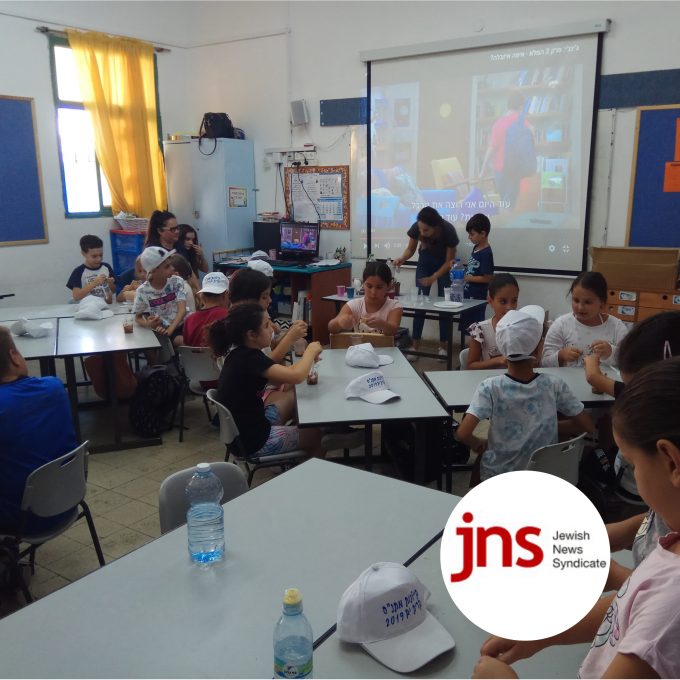An acclaimed documentary about the extraordinary music produced by prisoners at the Terezin ghetto has been acquired for World ORT’s Music and the Holocaust website.
The Music of Terezin went online on the evening of April 11 to coincide with Yom HaShoah.
Acquiring the 70-minute film has been a five-year process of tracking down the many rights holders to archive footage contained within it and then negotiating with the BBC, which last broadcast it more than 20 years ago.
“The film shows the paradox of beauty created amid such horror. It is the jewel in the crown of the Music and the Holocaust website,” said Clive Marks, who has been the driving force behind the creation and development of the website.
In order to acquire the rights, Mr Marks has worked closely with Simon Broughton, the editor of leading world music magazine Songlines, who directed, produced and wrote the film.
“It is a most moving film; very, very interesting and very educational,” Mr Marks said. “I contacted the BBC and told them it was absolutely ideal for our website. It adds authenticity: I’m concerned about antisemitism today. I don’t want to produce something and have the public say ‘Oh, there go the Jews again about the Holocaust’. I want to show music at the time of the Holocaust, to show how Jews and non-Jews could produce fine work even in horrendous circumstances.”

Nazi propaganda photograph of the original Brundibár cast in Terezin. Survivors have described their performances as “small bright sparks of hope and defiance in a long, dark night”.
Mr Broughton, whose film of a performance of Brundibar!, the children’s opera written by Hans Krasa in 1938 and performed dozens of times in Terezin, has also been acquired for the website, said his film put back on the map artists whose work had been obscured by the events in which they were produced.
“It’s not just that music and creativity occurred at Terezin, it’s the quality of what was produced which is so important; the music is equal to that produced by many, much more famous composers of the time,” he said.
The Music of Terezin tells the story of the four main composers who were active in the ghetto: Gideon Klein, Pavel Haas, Hans Krása and Viktor Ullmann, all of whom were killed by the Germans, and reveals how and why musical life developed.
“Because of what happened to them, their names just disappeared from music history books. So the point of the film and the website is to put back on the map people who have been undeservedly forgotten and neglected,” Mr Broughton said.
It includes location filming in Terezín, archive footage, powerful music and performance in some of the attics and a hidden synagogue where it was first performed. Vivid first-hand accounts from survivors include the singer Karel Berman, Lisa Kleinová (the sister of composer Gideon Klein), composer František Domažlicky, writer Ivan Klíma, pianist Edith Kraus, pianist Alice Herz-Sommer, artist Helga Weissová-Hošková and actress Zdenka Fantlová.
“The film was a co-production with Czech TV, soon after the Velvet Revolution. When it was made, in 1992, there were people alive who were still in good health and young enough to remember clearly and express well what happened. In 1993 it was shown on the BBC (with one repeat) and also broadcast on many international stations. But apart from a few special screenings it’s been locked up in the BBC archives. It’s important to liberate it because many of those people have since died and it’s great to have these witnesses for anybody to hear. It’s an incredible story that is still too little known,” Mr Broughton said.
To see the full documentary go to: http://holocaustmusic.ort.org/places/theresienstadt/the-music-of-terezin/
Approximately 150,000 Jews were transported to Terezin between 1941 and 1945; more than half of them were sent on to Auschwitz-Birkenau and other death camps while more than 30,000 died in situ.





